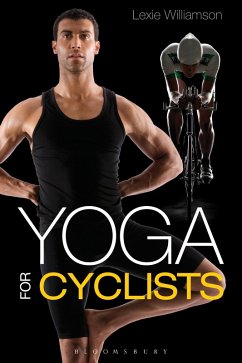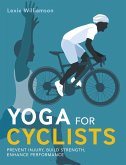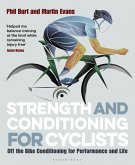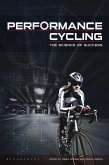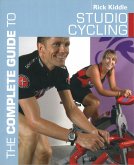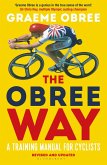Yoga for Cycling uses yoga postures to both stretch and lengthen those short, tight cycling hotspots in a way that is time-efficient and highly targeted.
Yoga is fast becoming an essential performance tool for road cyclists keen to improve flexibility, core strength, balance, breathing efficiency and mental focus. Most cyclists want to ride harder for longer but the unnatural slouched posture and repetitive nature of riding takes its toll on the body. Short, tight hamstrings, hip flexors and quadriceps are easily damaged and, over time, can cause knock-on problems in the lower back or knees.
But a cyclist with a supple back, hips and hamstrings will not only be far less prone to overuse injuries than his stiffer training partners. He can also hunker down into aerodynamic positions easily and ride for longer, with more comfort. A cyclist able to breathe slower and deeper will breathe more efficiently and economically. A cyclist able to reduce adrenaline and control a scattered mind with concentration techniques will remain calm and focused in the heat of a race.
Yoga for Cyclists will be the first title to address all of these areas by adapting yoga techniques specifically for cyclists of all levels, in clear, concise chapters. This is the ideal, no-nonsense resource, where every stretch, strengthening posture, breathing or recovery technique relates back to its impact on performance.
Yoga is fast becoming an essential performance tool for road cyclists keen to improve flexibility, core strength, balance, breathing efficiency and mental focus. Most cyclists want to ride harder for longer but the unnatural slouched posture and repetitive nature of riding takes its toll on the body. Short, tight hamstrings, hip flexors and quadriceps are easily damaged and, over time, can cause knock-on problems in the lower back or knees.
But a cyclist with a supple back, hips and hamstrings will not only be far less prone to overuse injuries than his stiffer training partners. He can also hunker down into aerodynamic positions easily and ride for longer, with more comfort. A cyclist able to breathe slower and deeper will breathe more efficiently and economically. A cyclist able to reduce adrenaline and control a scattered mind with concentration techniques will remain calm and focused in the heat of a race.
Yoga for Cyclists will be the first title to address all of these areas by adapting yoga techniques specifically for cyclists of all levels, in clear, concise chapters. This is the ideal, no-nonsense resource, where every stretch, strengthening posture, breathing or recovery technique relates back to its impact on performance.

